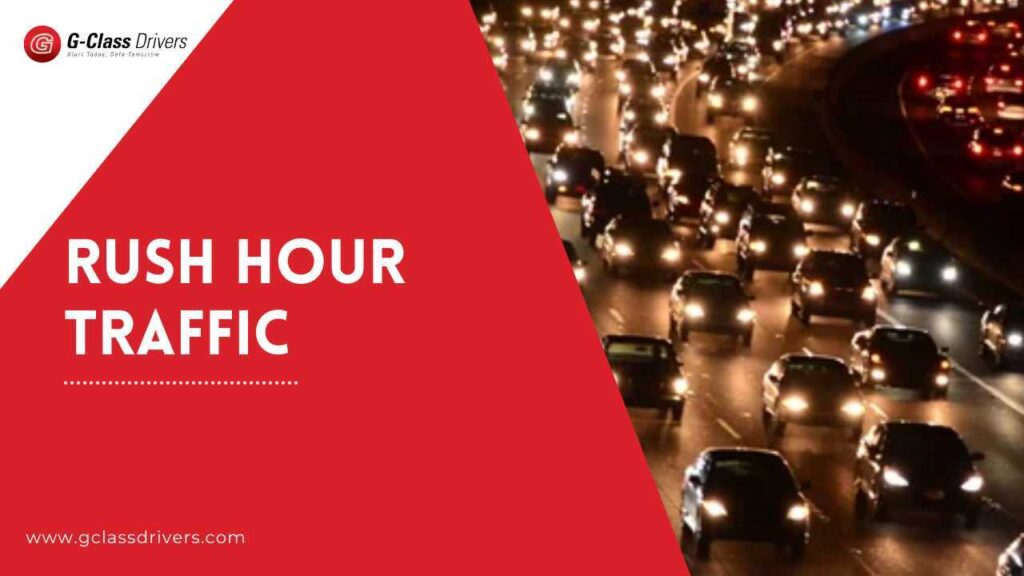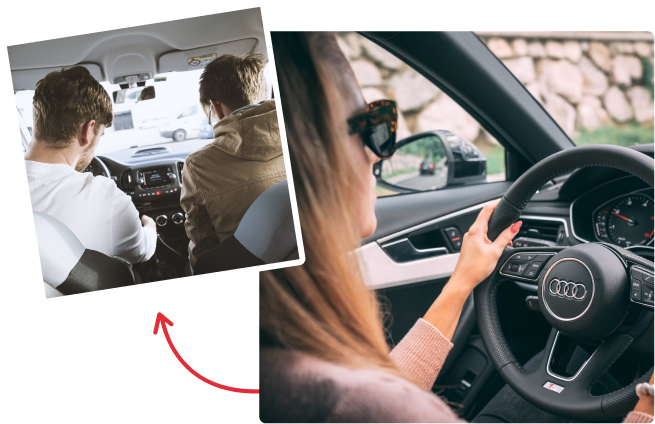It won’t be wrong to say that Rush hour traffic is the best time to enjoy your favorite playlist. Pinning down the exact rush hour in Toronto can be tricky. As Jerry Seinfeld aptly puts it, in big cities, “Everybody goes every way all the time.”
With a population nearing 3 million, traveling by highway or public transit in Toronto is never a solitary experience, though many wish it were. Most of you will agree with us that in rush hours in Canada the only thing faster than the traffic lights is the speed of your Tim Hortons order. Right?
However, let’s focus on when road trips or rides are most likely to encounter busy roads and heavy traffic.
Rush Hour in Canada
Rush hour also known as peak hour traffic times refers to the part of the day when traffic jam on roads and crowding on public transport are at their highest. Typically, this occurs twice each weekday. Once in the morning and once in the late afternoon or evening, coinciding with the times when most people commute. Despite the name, rush hour often extends beyond a single hour.
The term is broadly used but often specifically refers to private automobile traffic. This can mean a high volume of cars on the road, even if not many people are traveling, or normal traffic volumes with disruptions in speed. Similarly, “Internet rush hour” describes periods of peak data network usage, leading to delays and slower data delivery.
Causes of Rush Hour Traffic
Some of the main causes of rush hour traffic are as follows:
- High Vehicle Volume
- Commuter Patterns
- Limited Road Capacity
- Accidents and Incidents
- Traffic Signals
- Areas where roadways merge or narrow
- Public Transit Limitations
- Longer commutes from suburbs to city centers.
- Weather Conditions
- Construction Projects
Canada’s Peak Rush Hours Times
You need to know the time when there is a high probability of a traffic jam. Go through the given points to know the peak heavy traffic time
Morning Rush Hour
- Busiest Time: 8:15 a.m.-9 a.m.
- Peak Hours: 6:30 a.m.-10 a.m.
- Full service for subways, streetcars & buses
Morning Rush Hour (Highways)
- Busiest Time: 8 a.m.-9 a.m.
- Most Congested: Don Valley Parkway & Gardiner Expressway
- Highest vehicle Count: Gardiner west of Kipling
Afternoon Rush Hour
- Peak Time: 5 p.m.-6 p.m.
- Highways most congested: 3:30 p.m.-4:30 p.m.
- Afternoon transit peak hours: 3:30pm.-7pm
3 Distinct Rush Hours in Canada
So simply there are 3 distinct rush hour traffic in canada which you should keep in mind before going anywhere:
- Morning (8 a.m. to 9 a.m.): Worst for both highways & transit
- Afternoon (3:30 p.m. to 4:30 p.m.): Slowest highways
- Evening (5 p.m. to 6 p.m.): Most crowded
How Long on Average Does A Canadian Spend Time in Traffic?
What do you think is the average time a Canadian spends in traffic problems and rush? Well the answer is about 144 hours yearly. Feels like a lot, no?
The global report highlights Toronto and Vancouver as the two worst cities in Canada for traffic congestion. They ranked third and fourth in North America and 30th and 31st worldwide for time spent in traffic.
Driving Tips To Avoid Rush Hour Traffic
Follow the given road tips to avoid traffic stuck and for a smooth journey:
- Plan Your Routes: Use GPS apps to find less congested routes.
- Leave Early or Late: Travel outside peak traffic times.
- Work from Home: If possible, telecommute to avoid commuting entirely.
- Carpool: Share rides to reduce the number of vehicles on the road.
- Public Transportation: Utilize buses, trains, or subways.
- Flexible Work Hours: Arrange with your employer to shift your work hours.
- Real-Time Traffic Updates: Check traffic updates before leaving to choose the best route.
- Use Alternate Routes: Familiarize yourself with multiple routes to your destination.
- Stay Informed: Listen to traffic reports on the radio to avoid accidents and delays.
- Biking or Walking: For short distances, consider biking or walking to avoid traffic completely
Why GClass Drivers?
GClass Drivers is one of the best driving schools in Hamilton which provides all the necessary driver training. You will get all the guidance you need regarding driving. Also our expert instructors will also guide and train you for different scenarios.
Whether it’s regarding bad weather or rush hour traffic we have got everything you need. Aside from this our affordable courses are designed to teach you everything you need. If you are looking to get a license contact us now.
Wrapping It Up!
Driving during rush hour traffic in Canada can be challenging but with right strategies you can avoid much of the frustration. Whether it’s planning your routes using public transportation or adjusting your travel times there are multiple ways to reduce time spent in traffic. GClass Drivers Hamilton offers comprehensive training to equip you with the skills needed to handle various driving conditions including rush hour traffic. If you’re looking to improve your driving abilities or obtain your license contact GClass Drivers for expert guidance and affordable courses.
FAQs
What is the peak morning rush hour in Canada?
The busiest time in the morning is from 8:15 a.m. to 9 a.m., with peak hours extending from 6:30 a.m. to 10 a.m.
How much time does the average Canadian spend in traffic annually?
Canadians spend about 144 hours in rush-hour traffic each year.
Which cities in Canada have the worst traffic congestion?
Toronto and Vancouver are the two worst cities in Canada for traffic congestion.
What are some tips to avoid rush hour traffic?
Plan your routes, leave early or late, work from home if possible, carpool, use public transportation, and check real-time traffic control updates.
How can GClass Drivers help with rush hour traffic?
GClass Drivers provides comprehensive training and guidance to help you navigate and manage rush hour traffic effectively.
When is the peak afternoon rush hour in Canada?
The peak afternoon rush hour is from 3:30 p.m. to 4:30 p.m. on highways and from 5 p.m. to 6 p.m. for general traffic.
How can flexible work hours help avoid rush hour traffic?
Flexible work hours allow you to commute outside of peak traffic times, reducing the time spent in congestion.
Why should I consider using public transportation during rush hours?
Public transportation can help you avoid the stress and delays of rush hour traffic, often providing a more reliable and faster commute





